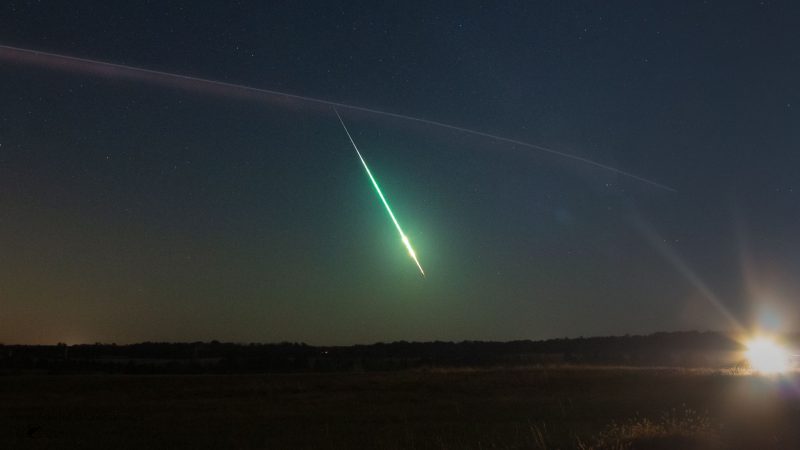
UPDATED NOVEMBER 11, 2021, AT 6:16 AM CST (12:16 UTC): Following the successful launch of the SpaceX Crew Dragon spacecraft called Endurance late yesterday, the SpaceX Crew-3 mission astronauts will travel around 22 hours before docking to the International Space Station. They will conduct leak and pressurization checks before opening the hatch tonight (7:45 p.m. CST on November 11 or 01:45 UTC on November 12). A welcoming ceremony is planned for 8:20 CST (02:20 UTC). The European Space Agency will be livestreaming the event. Watch the action live on ESA Web TV channel two, or via NASA TV.


ORIGINAL ARTICLE BEGINS BELOW:

Treat delayed: SpaceX-NASA Crew-3 launch
The planned Halloween launch of SpaceX’s Crew-3 mission was postponed late on October 30, 2021, due to bad weather along the flight path. Then on November 1, NASA announced a “minor medical issue” would further delay the launch. The three NASA astronauts and one German astronaut are now slated to head to the International Space Station (ISS), with the launch to be November 10 at 9:03 p.m. EST (02:03 UTC November 11).
The Crew-3 mission will mark the fourth operational flight for SpaceX under the Commercial Crew Program with NASA. It completed a static fire test – one of the final milestones ahead of launch – of its Falcon 9 rocket before dawn on October 28. Liftoff will be from Launch Complex 39A at NASA’s Kennedy Space Center (KSC) in Florida.
The Crew Dragon capsule, named Endurance, will spend 22 hours in orbit before arriving at the space station. Meanwhile, on Earth, the Falcon 9’s first stage will land, if all goes well, on the drone ship Just Read the Instructions shortly after liftoff.
Watch Crew-3 launch online
You can follow the mission’s countdown and launch online on NASA TV, the agency’s website, and its mobile app. You’ll also be able to see continuous coverage of the subsequent docking, hatch opening, and welcoming ceremony.
EarthSky’s 2022 lunar calendars are here. Order yours before they’re gone!

A successful static fire test
Crew-3 will be a milestone of sorts for SpaceX. Not only is it the fourth crewed flight of a Crew Dragon, but also the fifth human spaceflight for the company overall, dating back to the Demo-2 launch of May 2020. Moreover, Endurance is a brand new space capsule. But it will sit atop a veteran rocket that SpaceX previously used to launch cargo to the ISS in June.
Both Endurance and the Falcon 9 rolled out to the launch pad on October 27. Together standing 215 feet (65 m) tall, they were lifted upright later that afternoon.
Timelapse of Falcon 9 and Dragon going vertical pic.twitter.com/WEp20JfU9t
— SpaceX (@SpaceX) October 27, 2021
Teams worked overnight to prepare for the static fire test. They loaded it with super-chilled propellants: kerosene and liquid oxygen. The nine first-stage engines fired in the very early morning of October 28.
It generated 1.7 million pounds of thrust while secured firmly to the ground. And, following an assessment of its performance, engineers approved the space vehicle for launch. The static fire test comes on the heels of the flight readiness test, cleared on Monday, October 25, just before the crew’s arrival to KSC on October 26.

Crew-3, a party of four
The NASA astronauts forming the crew are Raja Chari (mission commander), Thomas Marshburn (pilot), and Kayla Barron (mission specialist). From the ESA is astronaut Matthias Maurer, also a mission specialist. On October 26, all four arrived at KSC and started their final preparations, including a quick chat with reporters broadcast from astronaut crew quarters.
The quartet will stay onboard the space station for at least six months. And all are rookies, except for Marshburn, who has two visits to the outpost under his belt.
He told Space.com:
For me, personally, I’m especially looking forward to flying with people that have not flown before and who I’ve never flown with before. And looking back on previous missions, it’s your human interactions with your crewmates that become the most special.
The rest of the crew say they’re most looking forward to the day-to-day activities, including conducting research and important science investigations.
Marshburn continued:
It’s really special to be at the cutting edge of an event when we, with our eyes, see something that humans have never seen before.
Future missions?
Barron and Chari are two of NASA’s potential Artemis astronauts who could walk on the moon one day. When asked about which scientific investigations she’s most excited for, Barron said:
I’m really excited about all the things we’re doing to inform future exploration missions to the moon and, hopefully, eventually to Mars.
Bottom line: Three NASA astronauts and one German astronaut are to embark on a Falcon 9 rocket to the International Space Station on November 10, 2021. The mission, called Crew-3, will mark the fourth operational flight for SpaceX under the Commercial Crew Program with NASA. Planned liftoff is 9:03 p.m. EST (02:03 UTC November 11) at Kennedy Space Center.











